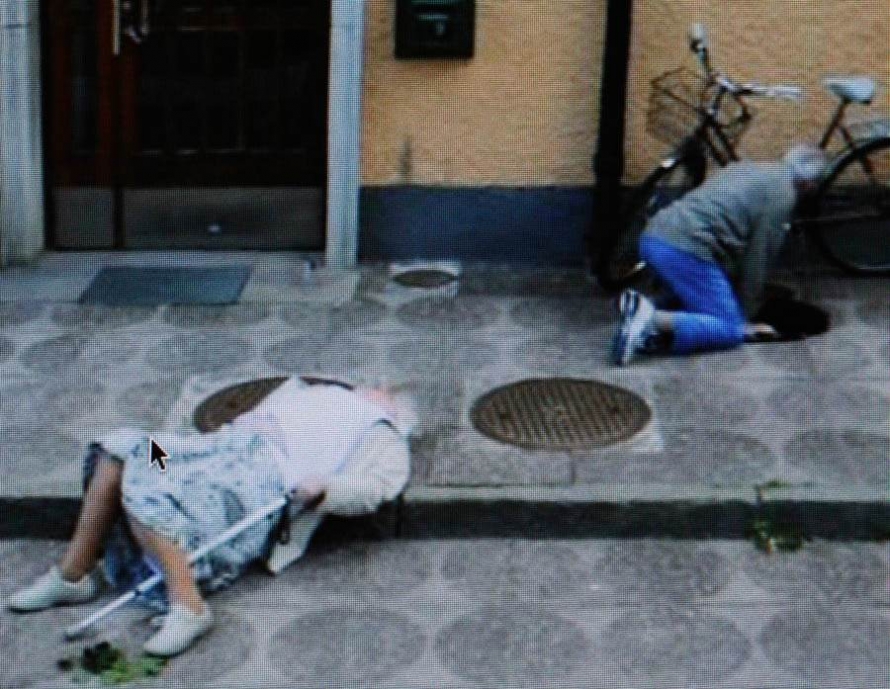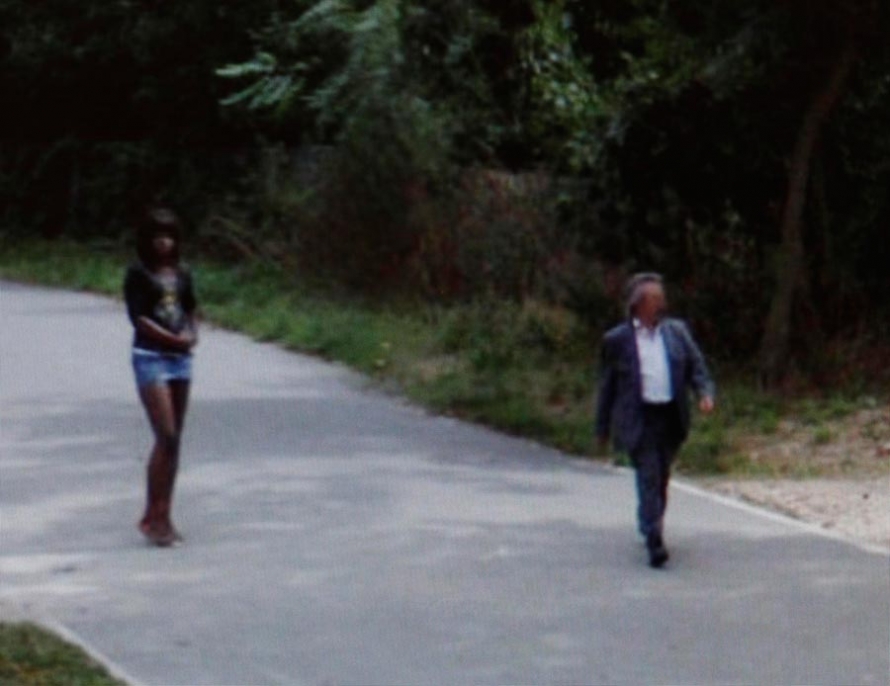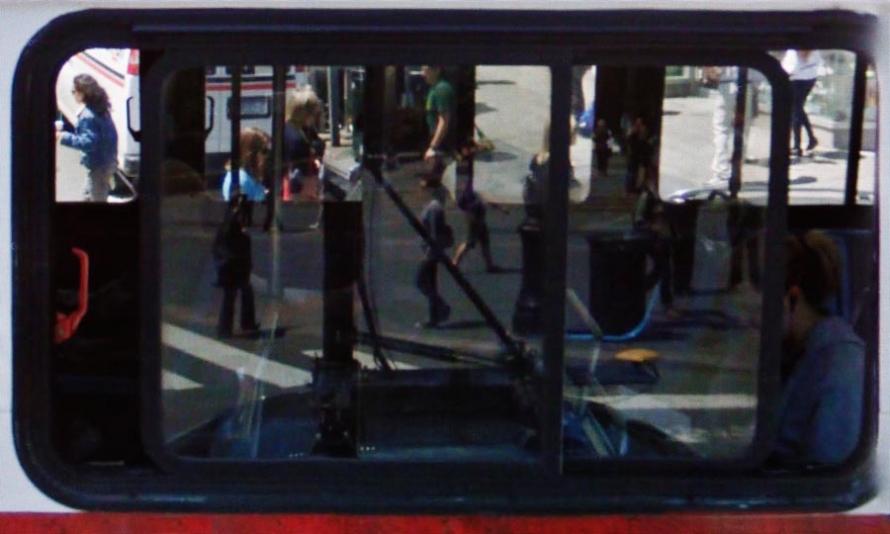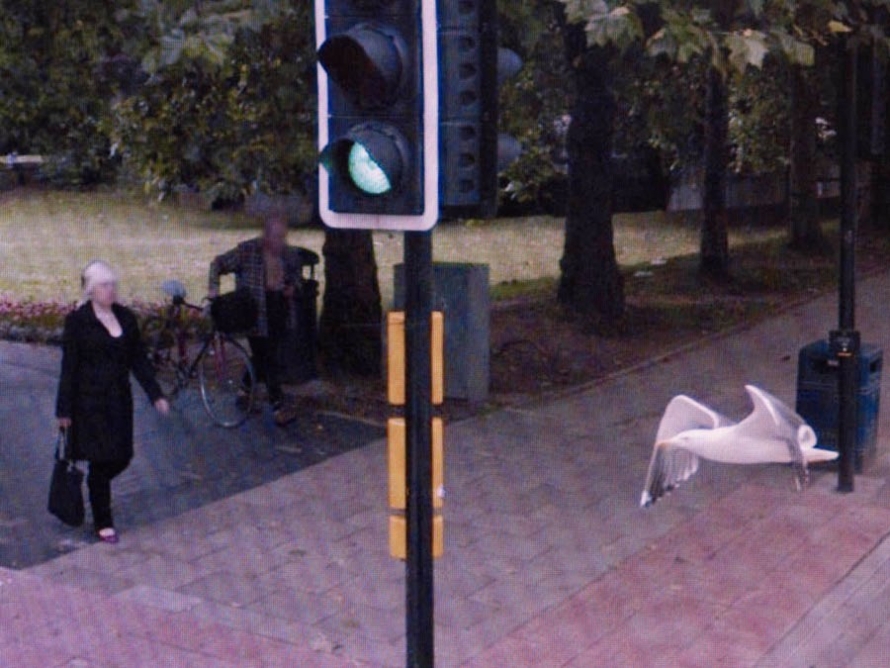Professionally uninterested in Paris, one of his current cities of residence, photographer Michael Wolf began trolling Google Street View for a new perspective on the over-exposed city. On Street View, Wolf located moments when day-to-day life surprises, and his acts of digital voyeurism bring subjectivity and subtlety to Google’s overwhelming, problematic attempt to recreate the world online.
Michael Wolf grew up in the United States. He attended U.C. Berkeley, and later studied with Otto Steinert at the University of Essen in Germany. Two previous books—Sitting in China (2002) and Hong Kong: front door/back door (2005)—feature his much-acclaimed photographs of China. Wolf lives and works in Hong Kong and Paris.
Wolf’s show “iseeyou” is on view at Bruce Silverstein Gallery, Oct. 28 to Dec. 24, 2010. All images courtesy the artist, all rights reserved.
Do you live in Asia?
I’ve lived in Hong Kong since 1994. It’s a very vibrant and exciting place, Asia. Manhattan is also very exciting. Any place which is not predictable is exciting for me. If you compare it with Paris, for instance, Paris is totally predictable—everywhere you go everything looks the same, it hasn’t changed in 100 years. So for me that’s the criteria for what’s interesting.
That lack of predictability is present in the work?
Well, the predictability is what drove me here. My wife moved to Paris and I’m there, and I commute between Hong Kong and Paris, but Paris I don’t find so exciting. There’s nothing to go and photograph really. It’s full of clichés that have been photographed millions of times so I holed myself up and started looking at Paris through Google in an attempt to figure out another way of looking at the city.
How did your view of the city change once on Google?
For me it was like a filter, I didn’t have to go out and walk around. It sounds like I think it’s a horrible city—it’s a wonderful city to go to museums and to have coffee and go to the markets and things like that. To go out and photograph, I just didn’t see anything, so through Google Street View I was suddenly interpreting another medium and it became interesting again.
I was looking at the streets trying to figure out what images interest me—what, for instance, is different. I did a whole series of Manhattan Street View. I started doing Hong Kong. Through the interpretation of a medium, you see the difference between the cities even though the structure of the street is very strong. Hong Kong looks totally different from Paris; there are little signifiers that every city has. For instance, in London the buses all have little yellow grips for the hands inside, and someone who lives in London said to me that’s a London bus. Or the metal poles on the sidewalks, which block the cars from going up, in Paris they all have a little round knob on top. Anyone who’s been to Paris knows that’s Paris. You start to find things that make these cities individual again visually.
You hear a lot about people going to cities where they weren’t born or raised, and photographing because there’s a perceived cultural distinction. But for you it seems to be about something else—lifestyle, behavior?
Lifestyle, behavior. Because of Street View, it’s a platform that I’m interpreting, something very intellectual is happening also. I’m interested in, of course, how the crop affects the picture and what elements I can bring together. I thought the birds I saw on Street View were absolutely amazing. They’re like this red thread going through all the cities at street level.
This is a different attitude than most photographers have toward urban landscape. Do you look at cities where you haven’t been?
Oh yeah. When I was in Paris I got sick and tired of it, and within a second I would go to Rome or London and have a dance around. But ultimately it’s extremely tiring and takes a lot of concentration, and when you do go out after five hours of looking you realize how wonderful the world is and how reduced the screen is. There’s no element of time. It’s very poor actually when you experience it like that.
Do you feel then that photographs like this are reduced aesthetically, too?
No, I love the aesthetics. The aesthetics were actually the thing that convinced me it was worth doing the show with them. At the beginning I had jpegs, and you know you can blow them up to 11 x 14, but when I made the first prints I realized they’re very sensual through the structure. They look three-dimensional.
Because of the pixilation they almost look like paintings.
It’s very, very visceral and that’s the crucial element to my work. I like people to like it, and not just intellectually. There’s a lot of work that’s conceptually very interesting but is just so dry. I like pictures that you feel attracted to.
It seems to remind those of us who live in cities of the voyeurism of our day-to-day lives, that breakdown of public and private where you feel like you have permission to look in people’s windows.
Well, people leave their curtains open. Google Street View is another way we’re prying. I’ve been called a digital stalker, that’s what someone wrote about me. I thought about it and actually it’s true because what I do, often with a lot of these situations, I’ll see something and then go backwards and forwards. The car takes a picture every five meters and stitches them together. Sometimes, if a person is walking the same speed of the car, you can see that person for a whole block. Or sometimes he’ll stop and you can see him behind the car. So you’re really stalking him in movement over a certain distance that he’s walking. Obviously, he’s not aware of it because it’s a year after that this is happening.
How do you decide what to blow up?
Through an edit and through the crop there’s a myriad of different ways you can go. I have a series just of people flipping the camera the bird, which is in a sense also flipping me the bird. But that’s part of the story. That people become aware of what the camera records.
What Google has done is an incredible feat. It’s going to go down in history as an incredible documentary project. Every single surface of Paris visible from the street was documented in 2009. In a hundred years, imagine looking back. It’s robot photography but nevertheless you see the architecture, the cars, the people, there’s so much you can see and so much information you can get from these images.
Is there a way in which robot photography is more reliable than something with more editorial oversight?
Well, it’s different, it’s objective in a sense because you’re taking the picture automatically. But you’re limited because it’s always the same perspective, the same height. It’s always from the middle of the road—the car is never waiting. If I were driving the car I’d probably wait to see what they’re gonna do. That’s part of the fun, going back to the images and interpreting, bringing the subjective into the objective.
In that respect is there an ownership issue with regard to these images?
No. Roy Lichtenstein did it with his comics, took crops out of frames. It’s a form of appropriation and I’m making it my own. They have copyright notices every 10 inches or so on every Google image, so you can see it in some of my photographs. I have images I’m showing in Paris of the sky and there’s a “Google copyright 2009” in the sky. I would look intentionally for the copyright sign to make a point. As Google, you can’t go and do this without asking people and expect to have ownership—and they’re making money off it, putting ads and stuff.
There are over 280,000 Germans who want their houses blurred. Google agreed and now they have to go through and blur the addresses of the house. I think the idea that there’s some all-encompassing thing out there recording everything makes people paranoid. If you look at it, they say they blur all the faces, but they don’t. I see that as a problem.
Well, if you’re recording absolutely everything indiscriminately, that’s one thing, but when you’re only recording, or paying attention to specific things, that’s when it becomes problematic.
My fear of Google is not so much the street view, but what they can do with it afterward. Google phoned my gallery in Paris last week and they were very upset, because the title of the show there is “We Are Watching You” and they said “you can’t do that because it’s like putting a stick in a hornet’s nest.” In France, it’s been accepted more or less, but here comes the gallery and they’re making a deal about this Big Brother thing. And Google said, please change the title, and the gallery said, “No.” They said, “Do you have any people recognizable in the show?” and we said, “Yes, but in our show we have blurred faces.” They just happened to be blurred in that show. But those are the concerns that Google has, because it’s making people aware of [Google’s] shortcomings.











